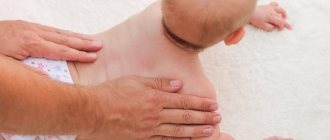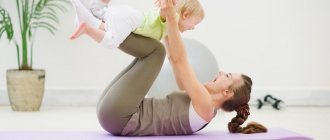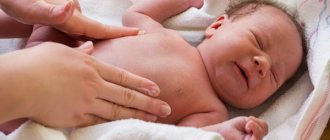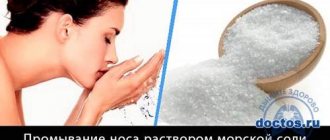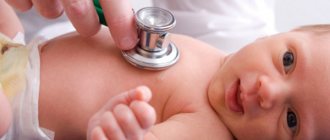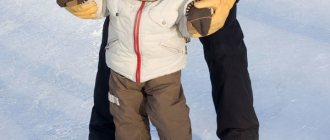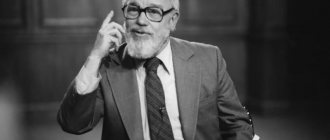Why and how to give a restorative massage to a child?
Baby massage consists of rubbing, kneading and stroking his arms, legs, neck, back, and abdomen.
If you massage your child correctly, it can correct many health problems. Good massage:
- improves digestion and relieves colic;
- makes sleep longer and more restful;
- normalizes the functioning of the nervous system;
- tones muscles, develops coordination of movements;
- stimulates metabolism;
- increases immunity.
How many sessions, courses, and duration of massage for infants?
A course of restorative massage for infants usually consists of 10-15 procedures. In the first year of life, it is advisable to do 3-4 courses of 10-15 sessions. The duration of one session is 40-60 minutes. One lesson should consist of massage and gymnastics (exercises on a ball with a baby are part of the gymnastics). It’s not worth adding swimming here, it’s another +20-30 minutes, such a load can harm the child. Believe me, if you give an infant a professional massage and gymnastics lasting 40-60 minutes, he will get very tired even without swimming.
How often should you massage your baby?
Pediatricians recommend giving your child massage in courses of ten procedures at three, six, nine and 12 months. The best time for massage is the first half of the day, an hour after feeding or an hour before it. Massage can be started from two to three weeks of age if the child is healthy and in a good mood. The room should have a comfortable temperature - 22-26°C.
If a mother gives a massage to a child, the baby calms down and tunes into a positive mood. How to give a massage to a three-month-old child so that he quickly begins to roll over onto his stomach and then sit down, how to massage the legs of a 12-month-old child so that he can walk faster - we will tell you more about this in this article.
Valgus and planovalgus foot deformities in children
When treating a child's hallux valgus, massage is done along the entire surface of the legs, including the lower back, because the problem affects the spine. It relieves muscle tension, reduces pain, stiffness, relaxes, and helps to properly distribute the load.
Depending on the severity of the curvature, the doctor selects a technique for therapeutic foot massage for children with valgus feet, duration, and number of sessions.
First, knead and warm up the lower back muscles. Then they move on to the buttocks, thighs, knees, legs, ankles. At the very end, the foot is massaged. In each zone, the intensity of movements should increase gradually until redness appears.
How specialists do foot massage for a child with hallux valgus, look at the video on the Internet. Before the first session, parents should familiarize themselves with the technique so that they know what to prepare their baby for. It is not recommended to massage children with hallux valgus at home using such videos. Without experience, there is a risk that in this case it will do more harm than good.
How to massage a newborn baby?
Newborn babies are tender and fragile, so many mothers are worried about how to massage their infant so as not to harm him. Touching the baby's body should be light and gentle. Before the massage, it is important to warm your hands, trim your nails or at least round them, and remove jewelry so as not to accidentally injure the baby’s thin skin. You can use baby cosmetic oil to glide your hands over the skin.
The rules on how to massage a one-month-old baby, as well as a child weighing up to 5 kg, are universal. Stroke your baby's legs, back, tummy and chest with light movements, returning to each part of the body three to four times. Stroke the tummy clockwise, do the “bicycle” exercise with the baby, pressing his legs to his chest. The total duration of the massage for children of this age is about five minutes.
How long should you massage your baby?
It's no secret that massage is a fairly pleasant and, most importantly, useful procedure. But how do children evaluate this procedure? And does the baby need it? Of course, massage for infants is an indispensable procedure for proper formation and full development. For the first 4-5 months, an infant is in a forced position with limited motor activity; he cannot sit, stand, stand, or roll over; until a certain age, his motor activity is represented by a chaotic scattering of arms and legs, which frightens him. And, as you know, movement is life. Therefore, even at this age, in addition to good nutrition and good care, the baby needs to move. The most optimal procedure with which you can compensate for the lack of physical activity in the first months of life is massage.
Also, scientists have proven that a child begins to perceive tactile sensations earlier than all others, and impulses from touching the skin go to the brain and have a beneficial effect on the entire child’s body. But in order not to harm your baby, when performing such a procedure, you should maintain a common sense approach.
Before you decide to prescribe a massage for your child, be sure to consult with your pediatrician, and it does not matter whether you perform the massage yourself or whether a massage therapist comes to you. Only a pediatrician gives an opinion on the state of your child’s health, decides whether your child can have a massage, and, if there are no contraindications, gives recommendations on how much to massage the baby and how many massage sessions the baby needs.
In fact, there are no specific standards; in massage, an individual approach should be observed, taking into account the fact that children are different - healthy, with congenital disorders, pathologies, diseases, plump, thin, and the age of the baby must also be taken into account. Based on this, there are several types of massage, they differ in the technique of massage movements and in duration. There are several types of massage: preventive or general massage - which is performed on healthy children to strengthen the musculoskeletal system, proper development and as a hardening and healing procedure in order to prevent various diseases. Specialized therapeutic massage is performed as an independent method of treatment or in combination with drug treatment for various pathologies in infants. Any massage, both preventive and therapeutic, can be performed on children older than 1-1.5 months; in exceptional cases, there are indications - congenital curvatures of the neck and feet, for massage at an earlier age. How long is a baby massage and what does it depend on? Depending on the age of the infant, a certain technique should be followed and the duration of the procedure itself varies.
Thus, at the age of up to 3 months, the duration of one massage procedure is 30-35 minutes - children at this age are still poorly adapted to the world around them, so long-term effects on the body should be avoided. At the age of 3 to 12 months, the duration of the session lengthens and is 35-45 minutes - children react to others, at this age, during the massage, you can distract the baby with various rhymes and fairy tales. Children from 1 to 3 years of age and infants, here elements of active gymnastics are added to the massage, children usually perceive all these techniques in the form of a game, it is important to constantly communicate with the child during these exercises, the massage procedure for one-year-olds and older is longer and amounts to 45 -60 minutes. A child aged 3 years and older is a child with whom you can agree on something and explain something, such children are more diligent, due to which a massage session lasts 50-70 minutes. At any age, initial sessions are carried out for 5-10 minutes, gradually increasing the time.
In order for the child, and sometimes parents, to feel the effect of the massage procedure itself, one session is not enough, even 2 - 3 is not the number that is necessary for the baby. The technique, type of procedure such as massage for infants, and how many sessions to perform are determined by the pediatrician. It all depends on the health status of your baby. If the baby is healthy or has minor physiological characteristics at his age, a preventive or restorative massage is prescribed, the course of such a massage is 10-15 daily sessions. If the baby has congenital or acquired diseases or pathologies, then such children are prescribed therapeutic massage and its course is somewhat longer - 12 - 20 procedures. The more precise number of sessions is determined by the doctor and the massage therapist himself, depending on how the child behaves during the procedure, the severity of the disease, what kind of pathology, etc.
How to massage a child's head and neck?
This type of massage is not recommended for children in the first months of life, and even when the child grows up, it is better to have a head massage performed by a specialist. If you want to do this massage yourself, massage your baby's head and neck with very gentle movements, as if you were lathering them with shampoo.
There are different methods of studying techniques for giving massage to children: video lessons, observing the work of a massage therapist, viewing diagrams and drawings in brochures on the development of a baby in the first year of life. But if, after studying the issue, you still have doubts about how to massage your child’s feet or how to massage his back, and also if your baby requires a course of professional corrective massage, you need to seek help from specialists.
What are the benefits of massage for children?
Over the past year, the number of house calls for baby massage has more than doubled. This trend indicates its relevance and popularity. In-home massage saves time and money. There is no need to travel across town to a specialist. I carry out the procedure in the most convenient and comfortable conditions for the client at his home. I arrive at a convenient time. Each child receives an individual approach, because I do not work according to a template. I take into account the body structure and development of each child. Advantages:
- Relaxing effect on muscles
- Normalizes blood circulation in tissues and parts of the body
- Strengthens the body's protective functions
- Reduces the intensity of colic
- Stabilizes the digestive system
- Strengthens the musculoskeletal system
- Develops and trains motor skills
- Has a general strengthening effect on the child’s body
After a massage, children become active and develop faster. The procedure has a positive effect on the psycho-emotional state of the baby. The quality of sleep improves. Allows you to cope with excessive excitability of the central nervous system.
Methods of tactile (maternal) massage
- home
- To our clients
- Articles for parents
- Child under 1 year
- Methods of tactile (maternal) massage
>
>
>
>
Massage can only be performed on a completely healthy child from the neonatal period with a positive emotional tone. Before starting the massage, the baby needs to be hugged, held close, and kissed. During the massage, you need to talk to him, hum, and maintain eye contact. If the child is unhappy, you need to stop the massage and calm him down. You can start the massage from any part of the body. It is important that the movements smoothly transition from one to another. The duration of the massage is up to 10 minutes. Chest Place both hands on the middle of the chest and, applying slight pressure, spread your arms to the baby's sides, as if smoothing the pages of a book. Without lifting your hands, with a movement whose trajectory resembles a heart shape, return your hands to their original position. Starting from the bottom of the sternum, gently but forcefully stroke the entire surface of the chest in a circular motion with the pads of your thumbs. Having reached the upper part of the sternum, continue moving to the collarbone area. Finally, run your hands down the baby’s arms. Hands Each hand is massaged separately. Gently but firmly hold the forearm with one hand, massaging the child's arm above the elbow with the fingers of the other hand. Using confident circular movements of the thumb, massage the shoulder between the elbow and the armpit with little effort. After finishing the shoulder massage, run your hand first over the chest and then down the arms. Repeat the same movements on your forearms and palms. The fingers are massaged with the index finger and thumb. Belly Place the heel of your palm just above the genitals, pressing lightly on the pubic bone. Spread your fingers wide, turning your palm clockwise. Repeat several times. Returning to the lower right corner of the abdomen, lightly massage it with the pads of the first two fingers in small circular movements. Starting on the right side, move along the trajectory of the arch to the left. The massage is completed with several wide movements of fingers spread to the sides on the tummy, chest, and arms. Legs Legs are massaged in the same way as arms. Supporting the lower leg, massage in a circular motion with the thumb in the direction from the knee to the pelvis and groin. Repeat the same movements from the ankle to the knee and end with small semicircles on the knee. The feet are massaged in the same way as the palms and fingers. Having finished massaging one leg, make a wide connecting movement down the sides, legs, and ankles. Massage of the big toes is performed with the index and thumb. Back To massage the back, you can pick up the baby while sitting on the floor. Each buttock is massaged with circular movements of the fingers towards the spine and waist. Perform a connecting movement by broadly stroking half of the back to the shoulder and down the arm to the palm and fingers.
Making light but confident circular movements, move up the right side of the spine, move down the shoulder and along the arm, performing connecting movements as before.
After massaging the entire surface of the back, perform connecting movements from top to bottom along the legs and feet. The smallest children need time to get used to the massage, so there is no need to rush to massage the entire back at once; do it gradually, lifting the child to hold him close and hug him. It may take several weeks before your child enjoys the entire procedure.
From 1.5 months, children’s physical education includes gymnastics. Communication with an adult stimulates a revitalization complex in a child during the first 3 months of life. This complex includes the following components: a smile, which from an anatomical point of view represents relaxation of facial muscles and lively movements of the limbs, associated either with extension or relaxation of the flexors.
Reference Guide / Ed. M. F. Ryazankina, V. P. Molochny
Exercises for 1 month old babies
Some exercises you can do are simple hand movements:
- "boxing",
- arms to the sides - hugged yourself,
- rotation with straight arms forward, backward (this will work if the baby’s tone is not strong).
Leg exercises:
- bend and straighten at the knees,
- straightened, bent and pressed the knees to the tummy.
- alternately with the right and left leg, bent towards the stomach, straightened
Flips onto the stomach - we help by the arm and leg. Several times in each direction. When we turn it back onto its back, be careful with the head.
Exercises such as the fetal position, bringing the knee and elbow together diagonally can be performed if you have the skill.

